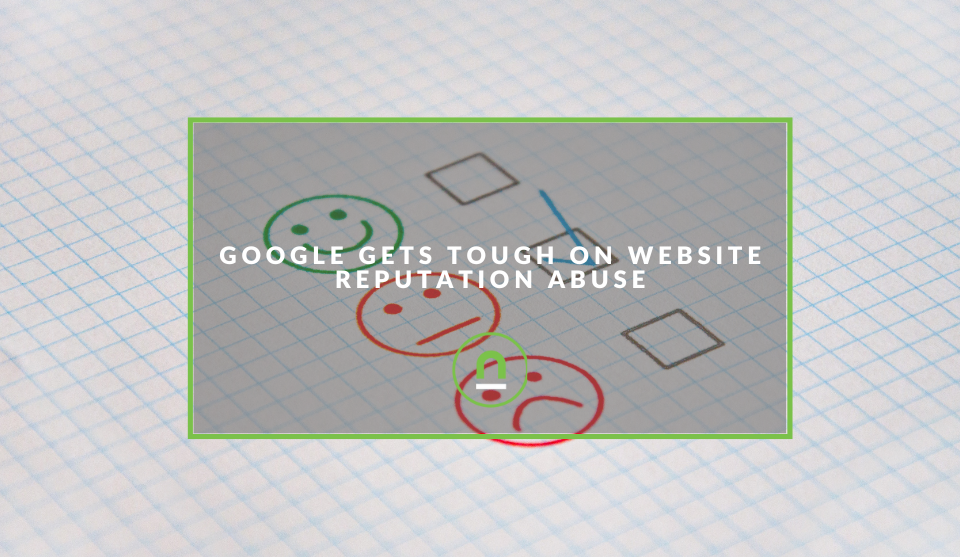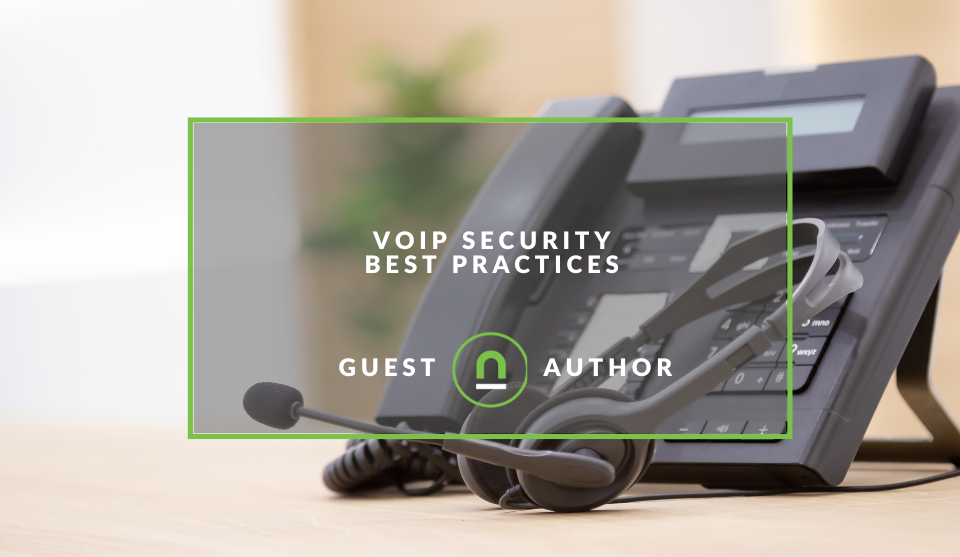Recent posts

Constructive Criticism
The Complete Guide To Setting Up Your Office Space
12 May 2024

Industry Experts
Transforming Your Business With Effective Outreach
10 May 2024

nichemarket Advice
What Is Site Reputation Abuse?
08 May 2024

Alarming
Secure Communications With VoIP Security Best Practices
02 May 2024
Popular posts
Extravaganza
Trending Music Hashtags To Get Your Posts Noticed
24 August 2018
Geek Chic
How To Fix iPhone/iPad Only Charging In Certain Positions
05 July 2020
Extravaganza
Trending Wedding Hashtags To Get Your Posts Noticed
18 September 2018
Money Talks
How To Find Coupons & Vouchers Online In South Africa
28 March 2019
Secure Communications With VoIP Security Best Practices
02 May 2024 | 0 comments | Posted by Sienna Martin in Alarming
In today's digital age, Voice over Internet Protocol has become a cornerstone of business communication. By transmitting voice data over the internet, VoIP offers flexibility, cost savings, and advanced features compared to traditional phone systems. However, like any technology, VoIP has its own security challenges. From eavesdropping to call hijacking, businesses must be vigilant in safeguarding their VoIP systems against potential threats.
VoIP Security Risk
Today, we need to learn and understand the potential risks associated with VoIP and virtual phone numbers.
Some of these threats are as follows:
- Eavesdropping: Unauthorised parties may intercept your VoIP calls, potentially exposing confidential information.
- Denial of Service (DoS) Attacks: DoS Attackers can flood your VoIP network with traffic, rendering it unusable.
- Vishing: VoIP is susceptible to voice phishing, where attackers impersonate trusted individuals or organizations to gather information.
Here, we'll explore the best practices for securing your VoIP infrastructure and protecting your business communications.
1. Choose a Secure VoIP Provider
The foundation of VoIP security begins with selecting a reputable and secure service provider. Look for providers that offer encryption protocols such as Secure Real-time Transport Protocol (SRTP) to secure voice traffic. Additionally, ensure that the provider implements robust authentication mechanisms and regularly updates their software to patch vulnerabilities.
2. Implement Strong Password Policies
Weak passwords are a common entry point for attackers. Enforce strong password policies for all VoIP accounts, requiring a combination of uppercase and lowercase letters, numbers, and special characters. Consider implementing multi-factor authentication (MFA) for an added layer of security.
3. Encrypt VoIP Traffic
Encrypting VoIP traffic ensures that conversations remain confidential and protected from interception. To encrypt both signaling and media streams, utilize encryption protocols such as Transport Layer Security (TLS) or Secure Real-time Transport Protocol (SRTP).
4. Keep Software Updated
Regularly update your VoIP software, including both the server and client applications. Software updates often contain patches for known vulnerabilities and security improvements. Establish a protocol for timely patching to minimize the risk of exploitation by attackers.
5. Secure Network Infrastructure
Ensure that your network infrastructure is properly configured and secured. Implement firewalls, intrusion detection systems, and virtual private networks (VPNs) to protect against unauthorized access and malicious activities. Segment your network to isolate VoIP traffic from other data streams, reducing the attack surface.
6. Monitor and Analyse Traffic
Deploy monitoring tools to monitor VoIP traffic for unusual patterns or suspicious activities continuously. Analyze call logs and traffic data for signs of unauthorised access, call spoofing, or denial-of-service (DoS) attacks. Promptly investigate and respond to any security incidents.
7. Educate Employees
Train your employees on VoIP security best practices and the potential risks associated with using VoIP systems. Teach them how to recognize phishing attempts, social engineering tactics, and other common attack vectors. Encourage them to report any security concerns or suspicious activities promptly.
8. Secure Physical Access
Protect physical access to VoIP hardware and infrastructure. Ensure that equipment such as VoIP phones, servers, and routers are stored in secure locations with limited access. Implement security measures such as biometric authentication or access control systems to prevent unauthorized tampering.
9. Regular Security Audits
Conduct regular security audits and penetration tests to assess the effectiveness of your VoIP security measures. Identify vulnerabilities and weaknesses in your infrastructure and address them promptly. Engage third-party security professionals to perform comprehensive assessments and provide recommendations for improvement.
10. Have a Response Plan
Develop a comprehensive incident response plan outlining procedures for detecting, responding to, and recovering from security incidents involving VoIP systems.
Define roles and responsibilities, establish communication channels, and rehearse the plan regularly to ensure a swift and coordinated response in the event of a breach.
Employing Robust VoIP Security
Voice over Internet Protocol (VoIP) technology has revolutionized the way businesses communicate, offering cost-effective and feature-rich solutions compared to traditional phone systems.
However, with VoIP's convenience and flexibility comes the responsibility to ensure robust security measures protect sensitive communications.
Employing robust VoIP security is crucial to safeguarding against potential threats and vulnerabilities. Let's delve into some key strategies for achieving this:
Encryption:
Encryption is fundamental to VoIP security, as it ensures that voice data remains confidential and protected from eavesdropping.
Implementing encryption protocols such as Transport Layer Security (TLS) for signalling and Secure Real-time Transport Protocol (SRTP) for media streams encrypts VoIP traffic, preventing unauthorized access and interception.
Authentication:
Strong authentication mechanisms are essential to verifying the identity of users and devices accessing the VoIP network. Methods such as username/password authentication, digital certificates, and multi-factor authentication (MFA) should be utilized to ensure that only authorized users can access VoIP services.
Access Control:
Implement granular access controls to restrict access to VoIP resources based on user roles, privileges, and network segments. Utilize firewalls, access control lists (ACLs), and virtual LANs (VLANs) to segment VoIP traffic and prevent unauthorized access from external networks.
Intrusion Detection and Prevention:
Deploy intrusion detection systems (IDS) and intrusion prevention systems (IPS) to monitor VoIP traffic for suspicious activities and potential security threats. These systems can detect and block malicious traffic, such as denial-of-service (DoS) attacks, call spoofing, and unauthorized access attempts.
Regular Software Updates:
Keep VoIP software, including server software and client applications, up to date with the latest security patches and updates. Regularly patching known vulnerabilities helps mitigate the risk of exploitation by attackers and ensures the VoIP system remains secure against emerging threats.
Network Security:
Secure the underlying network infrastructure to protect VoIP traffic from external threats. Implement firewalls, network segmentation, and virtual private networks (VPNs) to control access to VoIP services and prevent unauthorized access from external networks.
Secure your business and your customers
By implementing these VoIP security best practices, businesses can minimize the risk of security breaches and protect their sensitive communications from unauthorized access and interception.
While no system is completely immune to attacks, proactive security measures can significantly reduce the likelihood of a successful breach and mitigate potential damage to your organization.
Stay vigilant, stay informed, and prioritize the security of your business communications.
Tell us your story
Would you like to write for a nichemarket just like Sienna does? Find out how to submit a guest post, and when you're ready, you can contact us.
Are you looking to promote your business?
Businesses can create free business listings on nichemarket. The more information they provide about their business, the easier it will be for customers to find them online.
Registering with nichemarket is easy; all you will need to do is head over to our sign-up form and follow the instructions. If you require a more detailed guide on how to create your profile or your listing, then we highly recommend you check out the following articles.
Recommended reading
If you enjoyed this post and have time to spare, why not check out these related posts and dive deeper down the rabbit hole that is business.
You might also like
What Is Site Reputation Abuse?
08 May 2024
Posted by Che Kohler in nichemarket Advice
Google cracks down on shady content, we look at how this update targets site reputation abuse & what it means for website owners and the future of SE...
Read more5 Effective Ways to Drive Traffic to Your Website
19 March 2024
Posted by Brigitte Evans in Industry Experts
An introduction to sourcing high quality traffic for your niche and why you should focus on channels that can give you the best chance of reaching id...
Read more{{comment.sUserName}}
{{comment.iDayLastEdit}} day ago
{{comment.iDayLastEdit}} days ago
 {{blogcategory.sCategoryName}}
{{blogcategory.sCategoryName}}
